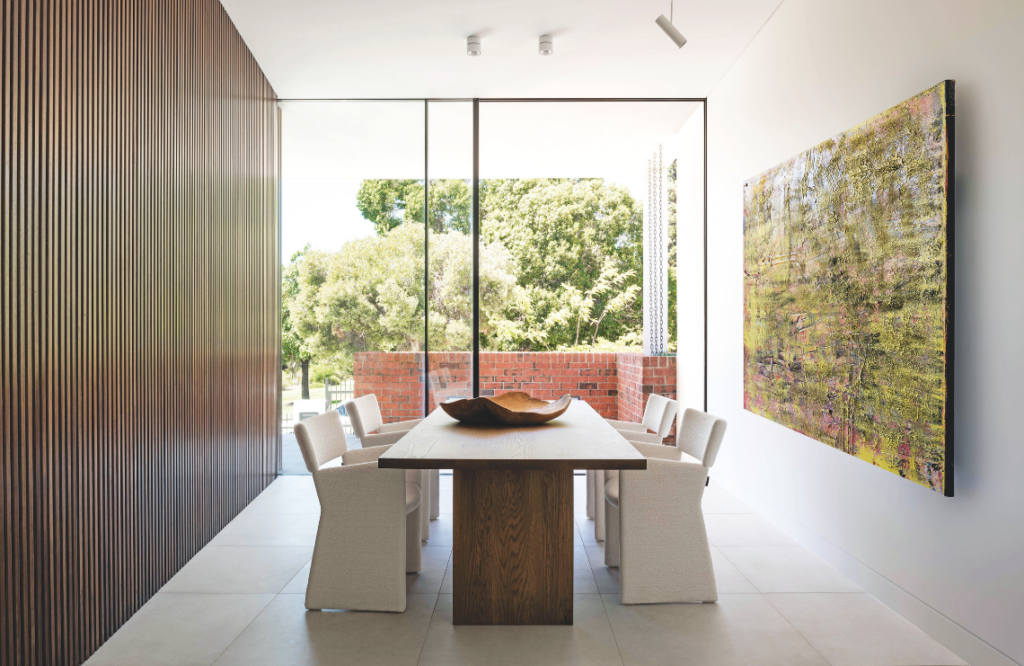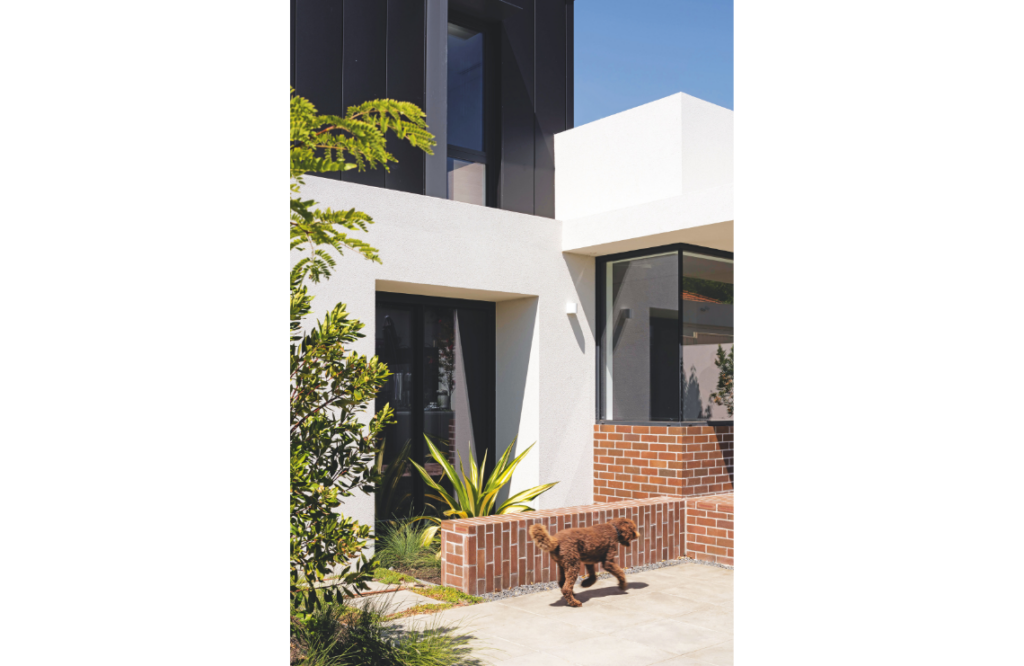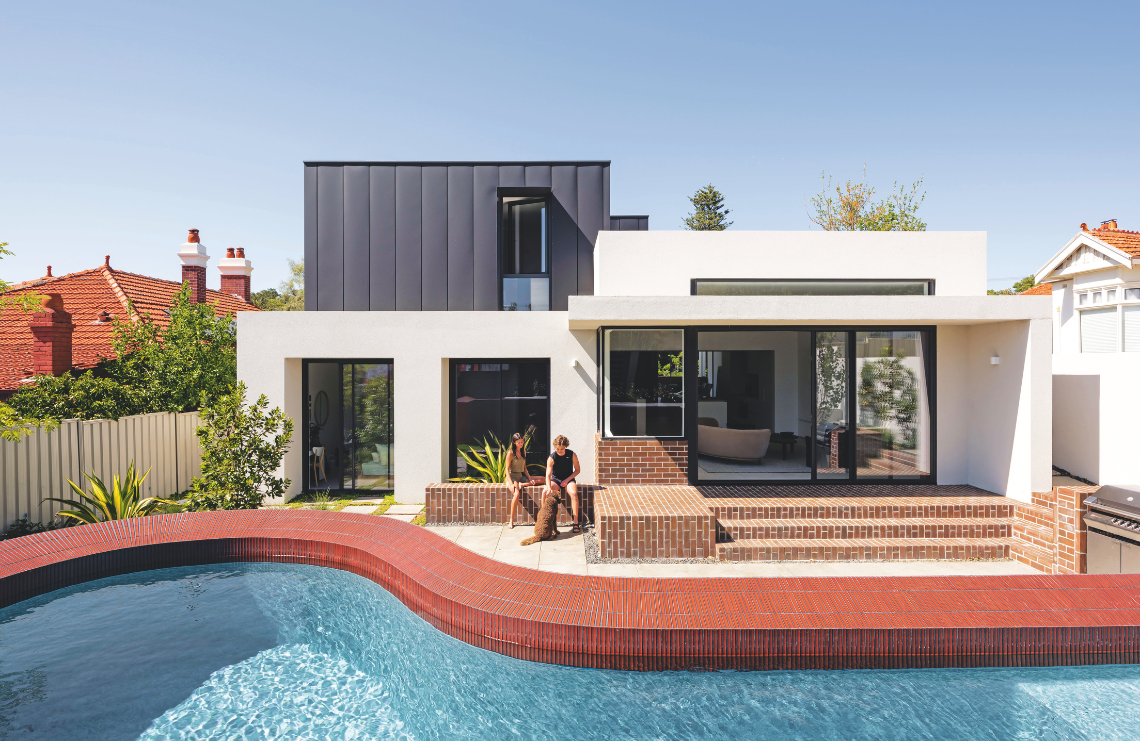Designing for Privacy and Views
In Mount Lawley, one of Perth’s inner northern suburbs, an empty lot sat between two character homes with Hyde Park natural reserve in its backyard. This spot was perfect for the couple, their four grown children, and a puppy to build their forever home. However, council approvals and privacy issues were to prove challenging. Simone Robeson and her team from Robeson Architects have employed clever building and design principles to create a contemporary home that maximises views of Hyde Park and the city skyline, but that also maintains the family’s privacy and satisfies council heritage zoning requirements.
“The brief called for a long-term home for the couple and their four children and puppy, together with a music room for Liz, the owner, to teach in, as well as a pool. They were also both sustainably minded and wanted to make sure the house was designed passively and as airtight as possible,” Simone explains.

A Carefully Crafted Layout
“While not strictly a heritage control zone, both neighbouring properties had character homes on them and the local council was very prescriptive and unyielding when it came to permitted external materials, street setbacks and building forms. The challenge was to design a home that was not trying to replicate a character home, but that was contemporary to suit the needs of the family and fit in with its streetscape while also not imposing on it,” says Simone.
Satisfying council requirements was necessary, but the key focus was maximising views of Hyde Park while maintaining privacy. Responding also to the site, Robeson Architects “split the home lengthways down the middle”, with the eastern side at ground level with a first floor, master suite overhead and a basement garage underneath (complying with height limitations). The team kept the western side single-storey and raised it half a metre above ground to provide privacy from cars and pedestrians. This single-storey wing serves as the main living area, with the kitchen, dining, and lounge. Keeping it single-storey maximised ceiling heights and views of Hyde Park, creating a spacious feel in the main living areas.

Maximising Natural Light and Outdoor Connections
“This raised living wing allowed for better views of the park’s trees while blocking out the busy traffic and cars parked below. Lines of sight were drawn at the planning stage from eye levels of both pedestrians on the street and the occupants sitting at their dining room table to ensure the living wing was raised at the right height for privacy,” says Simone.
Full-height Vitrocsa glazing doors slide into a pocket, connecting the dining room to an outdoor terrace and pool. The raised pool and deck provide an unobstructed view from the pool through the living room to Hyde Park. Raising the pool eliminated the need for balustrading, as the height formed a protective barrier. The pool, with its unique shape and tiling, has become a favourite spot for the homeowners’ grown children.
“Tiling the pool was more complex than originally anticipated,” says Simone. “We lost one tiler in the process as it was deemed too difficult. We had to model up all the tiles individually in a 3D model to prove it could be done. The second group of tilers understood the assignment and did an amazing job. It was executed perfectly.”

Material and Colour Selection for Harmony
The design of Hyde Park House aims to be a “contemporary interpretation of the character of the street and neighbourhood rather than a replication of a specific era”. The team carefully considered material and colour selection to connect the home with the surrounding buildings. Bone-coloured stuccoed walls on the western wing are a richer version of its neighbour. The eastern wing is clad in reddish-brown handmade face brick, echoing the red brick of the character homes. The curved face brick subtly references the Art Deco period, softening the home’s contemporary aesthetic.
Internally, materials and colours are minimal, featuring walnut cladding, ivory tiles, and a bone-coloured kitchen with white cabinetry. The narrow kitchen uses a light colour palette to enhance space, with thin 6mm benchtops continuing the minimal theme. Thermally broken, double-glazed windows and underfloor hydronic heating, powered by solar panels, ensure comfort year-round.
“The driving intention of the design was for it to be ‘of its place’ and sympathetic to the streetscape and adjacent heritage properties,” Simone says. “Much has gone into the aspects of the home that cannot be seen, but more importantly, makes the home feel comfortable.”






















